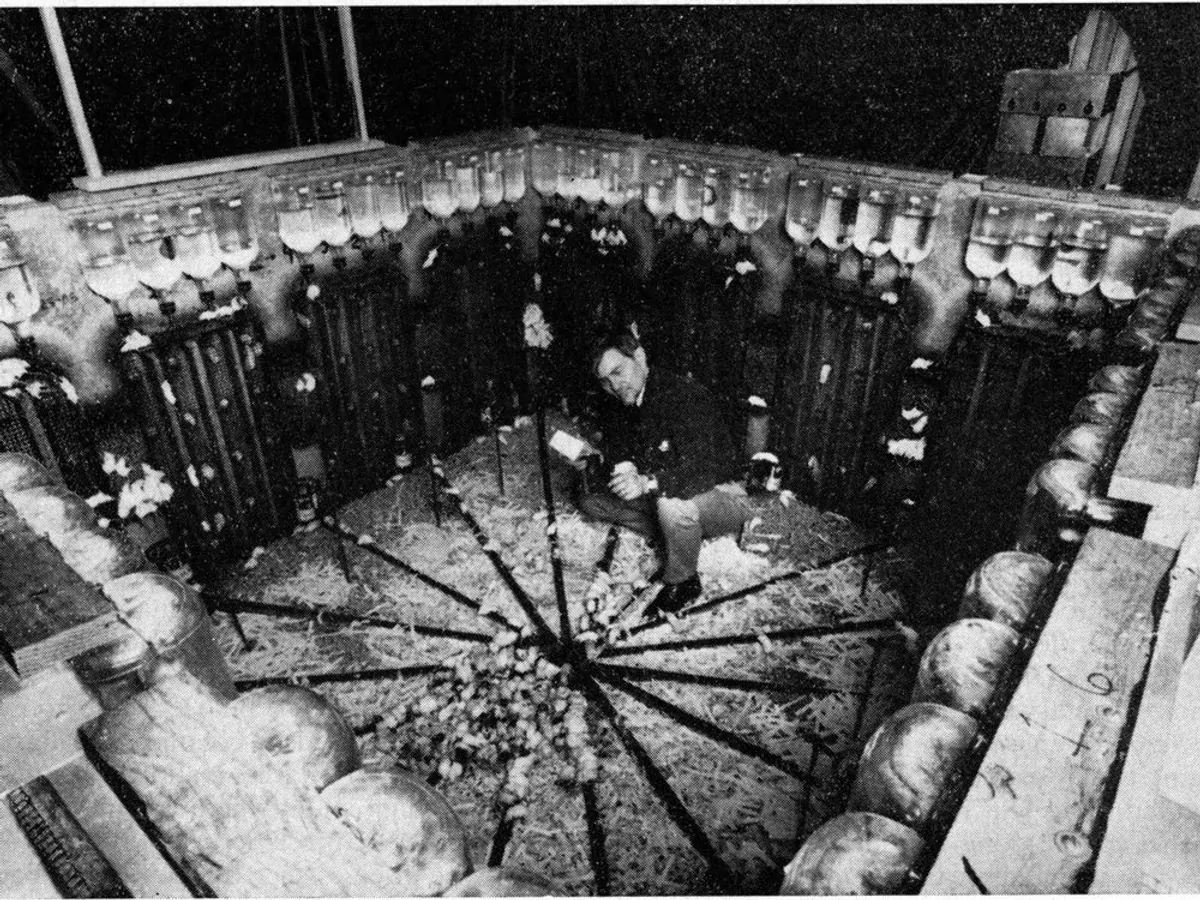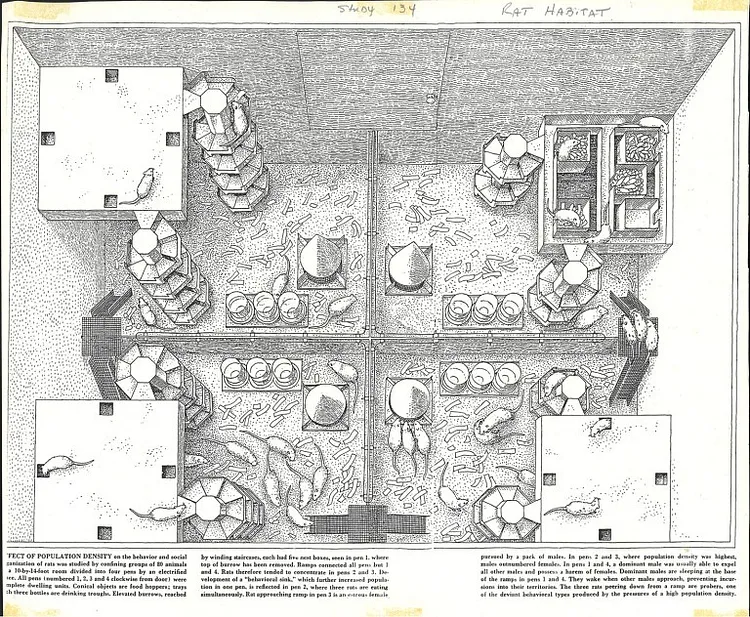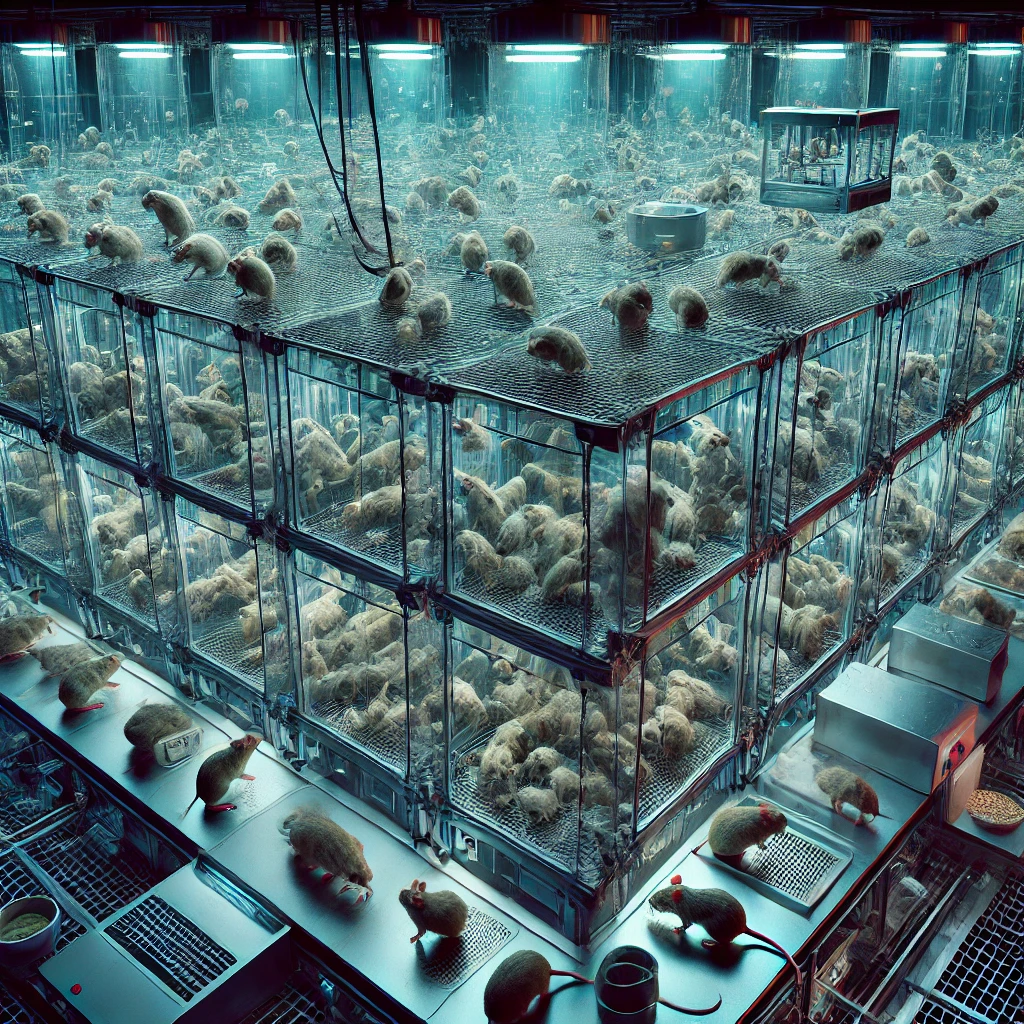In the heart of the 1960s, an American researcher embarked on an experiment designed to reveal the inherent fragility of social nature in living beings. John B. Calhoun, an ethologist and psychologist, created Universe 25, a microcosm meant to simulate the dynamics of a population undergoing exponential growth. What he discovered surpassed his darkest predictions, offering a chilling reflection of the potential trajectories of our own society.
The Creation of Universe 25
Imagine an artificial habitat, a pen measuring 2.7 by 3.6 meters, equipped with every comfort: abundant food, clean water, and secure refuges. This was Universe 25, designed to house up to 3,000 rats. Calhoun initially introduced eight individuals: four males and four females. The goal was to observe how a limited population would interact in an environment free from predators and with unlimited resources.

Exponential Growth and Decay
At first, the population grew rapidly, doubling every 55 days. However, after a period of expansion, signs of social stress began to manifest. The males became more aggressive, the females more withdrawn, and the young rats grew up without learning normal social interactions. This led to an increase in infant mortality and a decrease in birth rates.
Over time, the population reached a peak of 2,200 individuals. But instead of stabilizing, it began a rapid decline. The social structure collapsed: younger rats failed to develop maternal behaviors, males avoided females, and the population neared extinction. This phenomenon was termed by Calhoun as the "social death," where, despite the presence of resources, the community could no longer sustain itself.
Reflections and Parallels with Human Society
The Universe 25 experiment did not merely study the evolution of a population of rats but raised disturbing questions about social dynamics, urbanization, and human behavior. As the rat population grew unchecked, the social system began to collapse, leading to phenomena that seemed to form in a surprising and frightening way.
Population Growth and Saturation
One of the main concerns raised by the experiment was the correlation between population growth and environmental saturation. Initially, the rat population thrived due to the unlimited availability of resources. But when the population density reached a critical level, the social order began to crumble. The younger rats, unable to integrate into the social system, became isolated and incapable of forming bonds. The females became increasingly unable to care for their young, and the males became aggressive and uninterested in reproduction.
This gradual dysfunction presents an unsettling parallel to the demographic challenges we face today. In many modern societies, population growth in urban areas has led to overcrowding, resulting in social stress, crime, and alienation. Cities, symbols of progress and development, become "utopias" for some, while for others, they become oppressive places where the quality of life is compromised. The lack of healthy social space, where interactions transform into conflicts and frustration, is a theme we can observe in modern metropolises.

Social Stress, Alienation, and Inequality
The social behavior of the rats in Universe 25 provides a chilling parallel to the rise of alienation in modern societies. In the later stages of the experiment, there is a growing disinterest in social and familial relationships. The male rats become "peaceful," but in reality, they are impotent and unable to form connections; the females avoid reproduction, and even the young rats do not learn normal social interactions. The experiment paints a picture of a society in which social dynamics are destroyed by external factors such as stress and a lack of ecological balance.
In human society, similar phenomena can be observed in contexts where alienation and solitude are on the rise, despite access to abundant resources. The phenomenon of urban isolation, the growing disconnection between individuals and communities, and socio-economic inequality are themes that reflect the "social collapse" seen in the experiment. Young people in cities, who often live in environments of high population density and with increasing economic pressure, struggle to form stable relationships, while unemployment and precariousness fuel a cycle of disillusionment and distrust in traditional family and community structures.
Furthermore, inequality and the concentration of wealth in the hands of a few, as seen in the case of rats living in an overcrowded environment without resources being equitably distributed, offer another point for reflection. Calhoun shows us that, even with resources available, unequal distribution and overcrowding within a system can lead to social fragmentation.
Modernity and Social Collapse
Universe 25 also invites us to reflect on another crucial aspect: the fragility of our modern society in the face of collective challenges. Despite economic prosperity and technological advancements, many of our Western societies seem vulnerable to a social collapse similar to the one observed in the experiment. The constant push for growth, urbanization, and "modernization" without a sustainable and equitable vision has led to dysfunctions in the quality of life, resource access, and mental health of people.
We are thus in a phase of "slow collapse," where social structures are gradually disintegrating under the weight of challenges such as pollution, climate change, cultural loss, and the growing divide between rich and poor. Just as in Universe 25, where once the rats failed to "adapt" to their overcrowded environment, society began to collapse inexorably, our societies too might be vulnerable to a similar fate.
A Warning for the Future
Calhoun's experiment is not a definitive prediction but a powerful warning: when excessive growth is not accompanied by balanced management of resources, social cohesion, and education, society is destined to fail. It is crucial to reflect on how we can manage population growth, the integration of technologies, and the equitable distribution of resources, so that we do not follow the path of Universe 25.
Source - National Library of Medicine
Sources Consulted








Leave a Comment